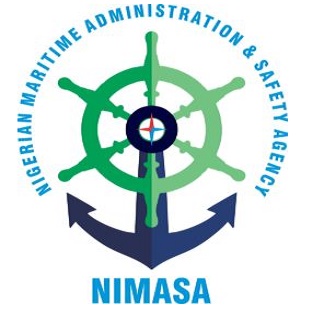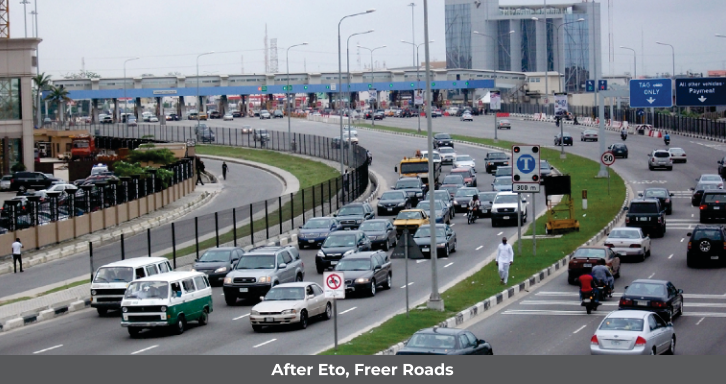
From Boardroom to Truck Terminals: Jama Onwubuariri’s Journey of Grit, Grace and Growth
- Maritime
- July 21, 2025
- No Comment
- 71
When Jama Onwubuariri walks into a room, he brings with him not just three decades of cross-sector experience, but the rare ability to connect dots across industries with clarity and conviction. As the Co-founder and Managing Director of Trucks Transit Parks Ltd (TTP), Jama is helping to redefine logistics and mobility infrastructure in Nigeria, one smart solution at a time. In this exclusive interview anchored by the Executive Director, ABIKE AWOJOBI, Jama opens up about the grit behind the titles and the bold vision driving TTP’s transformation of Nigeria’s truck transit landscape.
1.Ètò has been widely credited with reducing congestion and improving efficiency atApapa and Tin Can Ports. What were the biggest operational or stakeholderresistance points you faced during rollout, whether from truckers, port authorities, orinformal operators and how did TTP successfully navigate these challenges?

When Ètò was launched in 2021, we were attempting a bold shift from a chaotic, informal scheduling system to a structured, tech-driven traffic management solution. That naturally came with resistance. Key players in the industry were skeptical of the solution and feared that the traffic gridlock would worsen. Truckers feared exclusion; some worried about losing control, and informal gatekeepers were reluctant to relinquish long-standing power over port access.
What stood out most was the deep mistrust of change, especially one led by technology. Some digitally challenged truckers didn’t understand why they suddenly needed a digital call-up to move and access the ports. Even some government stakeholders were skeptical about enforcement and reliability. But we didn’t just deploy tech, we showed up, physically and consistently, in the spaces where the chaos thrived. We engaged truckers’ associations and unions, onboarded transporters, trained users with limited digital literacy and other stakeholders who will be interfacing with the Ètò technology, integrated with terminal operators and built human support channels into the tech. We were clear that this wasn’t just digitisation for its own sake; it was about restoring fairness, order, sanity, and business operations in all the industrial hubs in Apapa and Tincan, and improving efficiency in port operations at the Apapa and Tincan ports.
The results speak for themselves: over 2.8 million port and non-port bound truck movements have been successfully
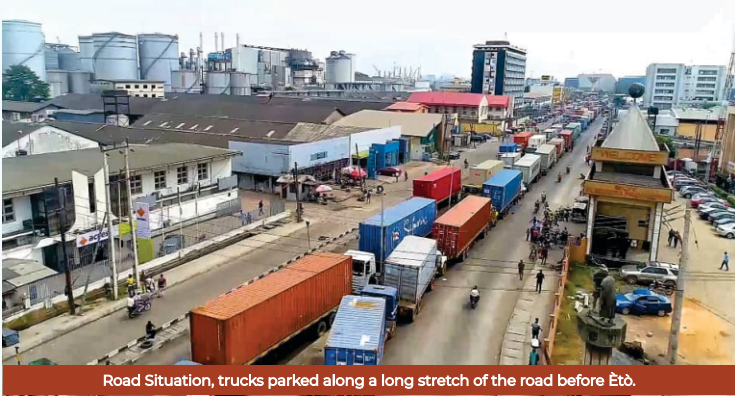
scheduled through Ètò, the time it takes truckers to access the Apapa and Tincan ports has significantly reduced from about 3 weeks to 48 hours, manufacturing and industrial companies are now able to evacuate over 400 trucks laden with cargo against less than 50 they were doing before 2021, and we’ve seen a near-complete elimination of port corridor gridlock. The resistance has not completely vanished, but it has been eroded by consistent delivery, transparency, and partnership. Today, the same groups that resisted are among our most vocal champions. That’s a testament to the power of inclusive innovation, building with people, not just for them.
Beyond solving immediate traffic bottlenecks, how is TTP leveraging the vast data generated by Ètò to drive broader improvements, such as predictive logistics, infrastructure planning, or even policy advocacy with government agencies? Are there specific insights that have surprised you or reshaped your approach?
Ètò has evolved beyond a call-up platform, it’s now a live diagnostic tool for Nigeria’s port access ecosystem. Every truck movement, time spent transitioning from the satellite parks to pregates and finally to the port, the time spent at each terminal, every delay, and every infraction is captured and analysed, allowing us to make evidence-based decisions. The use of data from Ètò has evolved from monitoring port efficiency and improving the logistics and transportation value chain to impacting economic planning, savings, and the Nigerian maritime industry and economy. The information generated from Ètò has allowed for the monitoring of the considerable decrease in the time it takes for trucks to reach the port, resulting in a significant reduction in the cost of transporting cargo in and out of Apapa and Tincan ports. This has also had a noticeable impact on the speed at which export containers reach the port, as well as the number of Nigerian export cargoes arriving at their destination countries, among other effects. However, I would say we are still in the early stages of harnessing this data for broader applications like predictive logistics or long-term infrastructure planning. Those use cases require deeper system integration, more advanced analytics layers and collaboration, integration with the technologies of other key players in port operation, and regulatory approvals, all of which we are working towards. Our goal is to evolve Ètò into a predictive logistics platform, one that helps ports anticipate bottlenecks before they happen, informs infrastructure development, and supports long-term policy planning. We’re not fully there yet, but every truck movement logged brings us closer.
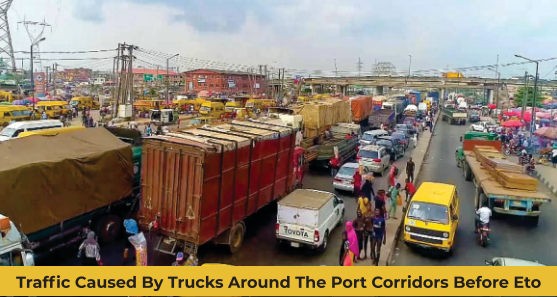
With documented improvements in truck turnaround times and haulage costs, what KPIs does TTP prioritize to measure long-term success? Given this impact, what’s your strategy for scaling Ètò to other high-congestion corridors in Nigeria, and what adaptations might be needed for different regions?
Our primary KPIs centre around core metrics like truck turnaround time, port access efficiency, system compliance rate, and cost-to-serve. Beyond metrics, we also track user satisfaction and operational transparency because a system can be fast but still unfair or inaccessible. We want Ètò to deliver efficiency with equity. In terms of scaling, we’ve developed a vanilla deployment framework that we can now deploy for manufacturing and industrial companies to manage vehicle traffic in their facility and create visibility to manage their facility performance and export/ replicate the traffic management technology solution in other states and regions with high truck traffic in Nigeria, or even border areas like Seme and Badagry while adapting for local realities. For instance, while Lagos struggles with dense urban congestion, other regions might have security concerns, longer intermodal travel distances, or less digital penetration. We design for those nuances.
We’re also exploring interstate integration, creating a unified dashboard for trucks moving from hinterland states to port cities. That could significantly reduce inter-jurisdictional friction and improve planning for haulage firms. Our system is modular. It can adapt to port-city, inland, or even border trade routes. But local partnerships, policy alignment, and trust-building are what unlock scale. Ultimately, our scale strategy is about building a national backbone for smart logistics, and Ètò is the nerve centre for that vision.

Nigeria’s logistics sector grapples with informal systems, regulatory fragmentation, and infrastructure gaps. How does TTP’s tech-driven model reconcile cutting-edge innovation with the day-to-day realities of operating in this complex environment? Are there compromises you’ve had to make, or traditional practices you’ve intentionally preserved?
We don’t see technology as something that must replace informality; we see it as something that can channel informality into structure. In Nigeria, any tech that tries to bulldoze traditional systems without empathy will fail. That’s why our approach is rooted in practical integration. Our smartest move was to use a tripod approach, one of which is to leverage the existing and new trailer park infrastructure as one of the driving forces to provide a seamless traffic management solution. Instead of eliminating these critical but formerly substandard infrastructure, we turned them into regulated staging areas, each with digital oversight. That kept key stakeholders comfortable while giving NPA and TTP the control to enforce compliance. Consequent to our decades of extensive research in logistic infrastructure and traffic management, together with the Nigerian reality, we strongly believe that technology solutions cannot work in isolation; they must leverage physical infrastructure with controls. In addition, periodically, we engage with transporter associations, unions, licensed agents, freight forwarders, terminal operators, individual drivers, and other stakeholders to understand their pain points, receive feedback on areas that need to be addressed or improved in our technology process, or influence the introduction of a few features or policy frameworks. This series of engagements has contributed to the milestones and success of the Ètò call-up system. We also introduced manual fallback protocols—so if there is a network failure, protests, or system downtime, truckers can still move via an auditable override process. We built features like offline ticket scanning, manual barrier access controls, and having support staff at entry and exit points, not because it was fancy or inexpensive, but because it was necessary. Furthermore, we have road marshals deployed to provide periodic real-time traffic situation of the Apapa and Tincan access roads in collaboration with the security and traffic enforcement team to manage the systematic release of trucks from parks and pregates, troubleshooting approach to manage system and barrier downtime, offline ticket scanning, digital monitoring dashboard to report the downtime of access control barriers for immediate resolution.
As automation, AI, and green logistics reshape global supply chains, how is TTP preparing for this future while still addressing today’s urgent port inefficiencies? Where do you see the biggest opportunities for disruption in Africa’s haulage?
While global logistics is already embracing AI and green tech, our current focus is to build reliable technology and repeatable logistics processes, because that’s the foundation on which automation and sustainability will eventually rest. That said, we’re not standing still. We are progressively introducing Artificial Intelligence into our systems, processes and operations. We’re already set to deploy:RFID-linked e-tags for verified truck identities, Integrations with manufacturer supply chain systems for faster, cleaner dispatch, Verification systems for unique vehicle identification to checkmate racketeering and an enforcement automation that eliminates human gatekeeping at access points. The big opportunity in African logistics isn’t just about high-end innovation; it’s about digitally enabled transparency. In the next decade, we believe Ètò will help power intermodal connectivity, interface with rail and inland ports, and enable green cargo scheduling that reduces emissions and fuel waste. We’re building for that future, one use case at a time. We don’t just want to fix yesterday’schaos; we want to help engineer tomorrow’s efficiency. That’s the real legacy we aim to build.
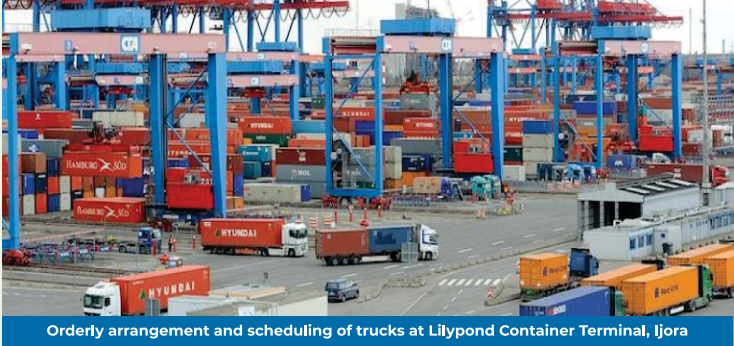
Charting Safer Waters: Africa’s Ferry Safety Push Gains Momentum in Lagos
In the face of growing urbanisation and increasing demand for safe, efficient transport alternatives, Africa’s ferry systems are under the spotlight. Lagos, Nigeria’s bustling coastal city, recently played host to the 2025 Regional Safety Conference on Ferry Transport Systems in Africa, drawing local and international stakeholders committed to reshaping the continent’s waterways.
The 2025 Regional Safety Conference on Ferry Transport Systems in Africa held in Lagos spotlighted the urgent need for unified regional action on ferry safety.
The conference underscored Lagos State’s strides in ferry infrastructure, including modern jetties, rescue patrols, and data monitoring systems. However, leaders stressed that ferry safety must transcend local efforts, urging for shared data, standardized protocols, and joint policy frameworks.
A standout moment was Lagos’ call for NIWA to halt disruptive sand filling on waterways, citing environmental and transport concerns. Discussions revolved around innovation, collaboration, and sustainable development as essential drivers of safer ferry systems.
LASWA emphasised policy harmonisation and technical standards, while MOWCA highlighted the Libreville Plan of Action for regional safety. International partners like INTERFERRY advocated for strategic investments and sustainable pricing models to expand ferry access.
The forum also addressed regulatory bottlenecks and infrastructure gaps affecting regional water transport. The gathering marked a clear call for translating dialogue into action through strong partnerships and practical solutions. Ultimately, the event reinforced Lagos’ position as a leader in Africa’s push for safer, more efficient ferry transport systems.
Spotlighting Tinubu’s Policy Shifting Reforms In The maritime Sector
President Bola Tinubu’s maritime reforms mark a comprehensive policy shift—crafting institutional, infrastructural, financial, and security pillars to position Nigeria as a premier maritime nation, SAMUEL BENJAMIN reports.
President Bola Tinubu’s administration has brought sweeping reforms to Nigeria’s maritime sector since taking office. The reforms, government said it is aim at modernizing infrastructure, improve efficiency, promote security, and position the country as a key maritime hub.
Tinubu started with the creation of the Federal Ministry of Marine & Blue Economy. With the ministry, the president provided institutional restructuring, as maritime responsibilities were removed from the Ministry of Transportation, into a standalone ministry that focuses solely on the maritime domain. Tinubu also appointed Adegboyega Oyetola to head the ministry. Just some months back, the minister launched a ten-year National Blue Economy Strategy targeting sustainable development, job creation, and integration with the AfCFTA.
In the area of port infrastructure and modernization, the Tinubu administration has approved contracts for the modernization of Apapa, Lagos Port Complex, and Tin Can Island, with the goal of creating over 20,000 jobs. Also, the longstanding traffic congestion along the Apapa ports was resolved via digital traffic systems, port access reforms, and rail evacuation enhancements — including rail-linked APMT terminal evacuating over 100 containers daily.
As a way of deepening the footprint within the maritime sector, the government has revived the dormant Cabotage Vessel Financing Fund (CVFF) to empower indigenous ship-owners and enhance the sector’s global competitiveness. This initiative aims to promote local participation in maritime activities and reduce dependence on foreign vessels. In April 2025, the Minister of Marine and Blue Economy, Mr. Adegboyega Oyetola, directed the Nigerian Maritime Administration and Safety Agency (NIMASA) to commence the disbursement process for the CVFF. This directive marked a significant shift from over 20 years of administrative stagnation and ushered in a new era of strategic repositioning for Nigeria’s indigenous shipping sector. The disbursement is expected to begin by August 2025, with eligible Nigerian shipping companies invited to apply for funding. Each qualified applicant can access up to $25 million at competitive interest rates to acquire vessels that meet international safety and performance standards. The fund will be administered in partnership with carefully selected and approved Primary Lending Institutions (PLIs), ensuring professional and efficient disbursement
Furthermore, the government launched the Deep Blue Project, which is a testament to its commitment to securing its maritime domain and fostering regional stability. Through the integration of advanced technologies, legal reforms, and international collaborations, the project aims to create a safer and more secure maritime environment for all stakeholders.
After about 16, the government took the bull by the horn by appoint a managing director of the The Maritime Development Bank (MDB). The MDB concept is a proposed financial institution aimed at addressing the funding challenges faced by Nigeria’s maritime sector. This initiative has been advocated by maritime stakeholders and experts, emphasizing the need for dedicated financial support to stimulate growth and development in the industry.
The action of the government in appointing an MD for the MDB excited so many stakeholders because the Nigeria’s maritime sector holds significant potential for economic growth, job creation, and revenue generation. However, the industry faces challenges such as inadequate infrastructure, limited access to financing, and regulatory bottlenecks. The establishment of the MDB is seen as a strategic move to provide tailored financial solutions, including loans, grants, and equity investments, to support indigenous shipowners, port operators, and other maritime enterprises.
Although some stakeholders have commended the efforts, but they stated that the sector is still grappling with high operational costs, equipment deficits, limited rail connectivity, inter-agency rivalries which is undermining progress among others.
Nonetheless, they maintained that Tinubu’s maritime reforms are bold and multi-pronged: institutional overhauls, infrastructure modernization, tech-driven efficiency, enhanced security, and focused support for local shipping.
One of the stakeholders, who do not want to be quoted, stated that persistence is key — sustained budget backing, transparency in CVFF rollout, and deeper inter-agency cooperation will determine whether Nigeria capitalizes on its maritime potential fully.
“These initiatives signal a strategic transformation — under Tinubu, the maritime sector is being poised not just as a revenue stream, but a fulcrum for national economic diversification, job creation, and sustainable development.”
Also commenting, Chief Osita Patrick Chukwu, National Coordinator, Save Nigeria Maritime group, noted that some of the reforms are more like laying the right foundation. He, however, feared that some of the policy reforms might just be good idea on paper as they will not be implemented to turn around the sector. He argued that Cabotage Vessel Financing Fund could likely end up with politicians within or outside the maritime sector to fund the next election. He said that three to five years away from now will prove him right or now.
He said that the sector for many years have been plagued by persons who are not truly concerned about developing the sector and harnessing the huge opportunities within the sector for the country’s growth and development.
He maintained that these persons are just after personal gains at the detriment of developing the sector.




